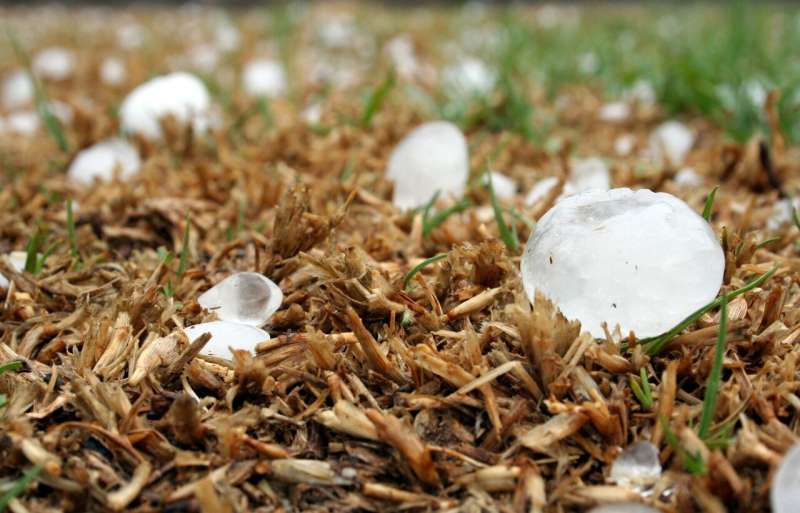This article has been reviewed according to Science X's editorial process and policies. Editors have highlighted the following attributes while ensuring the content's credibility:
fact-checked
peer-reviewed publication
trusted source
proofread
Unraveling the song of ice and fire across the American landscape with machine learning

In the rugged terrain of the western United States, where wildfires rage unchecked, a surprising connection emerges with the tumultuous skies of the central US. A recent study published in Advances in Atmospheric Sciences explores the intriguing relationship between wildfires in the West and hailstorms in the Central US.
At the core of this pioneering study led by Jiwen Fan, who was at Pacific Northwest National Laboratory and is currently at Argonne National Laboratory, lies the innovative application of machine learning (ML) techniques to illuminate the hidden link between seemingly disparate phenomena.
Machine learning algorithms, including Random Forest and Extreme Gradient Boosting, are employed to analyze vast datasets spanning two decades, from 2001 to 2020. These ML models are trained to predict the occurrence of large hail in Central US states based on a multitude of variables, including meteorological conditions in the fire region, wind patterns, and characteristics of wildfires themselves.
Through meticulous analysis and data processing, the ML models achieve remarkable accuracy, with predictions exceeding 90% in some cases. By identifying key variables and patterns, these models unveil correlations between wildfires in the western US and hailstorms in the central US, providing invaluable insights into the remote impacts of wildfires on severe weather events thousands of miles away.
"We are now able to paint a vivid picture of the intricate relationship between fire and hail across the American landscape. Wildfires in the western US, exert a far-reaching influence on atmospheric conditions, shaping the trajectory of severe weather events thousands of miles away—something that we never thought before" said Dr. Jiwen Fan.
"Meteorological variables like westerly wind, the temperature and relative humidity in the fire region and the intensity of wildfires emerge as key players in this climatic symphony."
Yet, amidst the marvel of discovery, challenges abound. Attempts to predict the daily count of large hail events reveal the complexities of nature's whims, reminding us of the unpredictable nature of weather phenomena. As researchers continue to refine their models and confront data imbalances, the quest for understanding presses onward.
The utilization of ML techniques represents a significant advancement in atmospheric science, allowing researchers to navigate complex datasets and extract meaningful patterns that may have eluded traditional statistical methods.
With ML as their guiding light, scientists embark on a journey to unravel the mysteries of Earth's interconnected systems and pave the way for more accurate predictions and proactive measures in the face of evolving climate dynamics.
More information: Xinming Lin et al, Machine Learning Analysis of Impact of Western US Fires on Central US Hailstorms, Advances in Atmospheric Sciences (2024). DOI: 10.1007/s00376-024-3198-7
Journal information: Advances in Atmospheric Sciences
Provided by Chinese Academy of Sciences




















